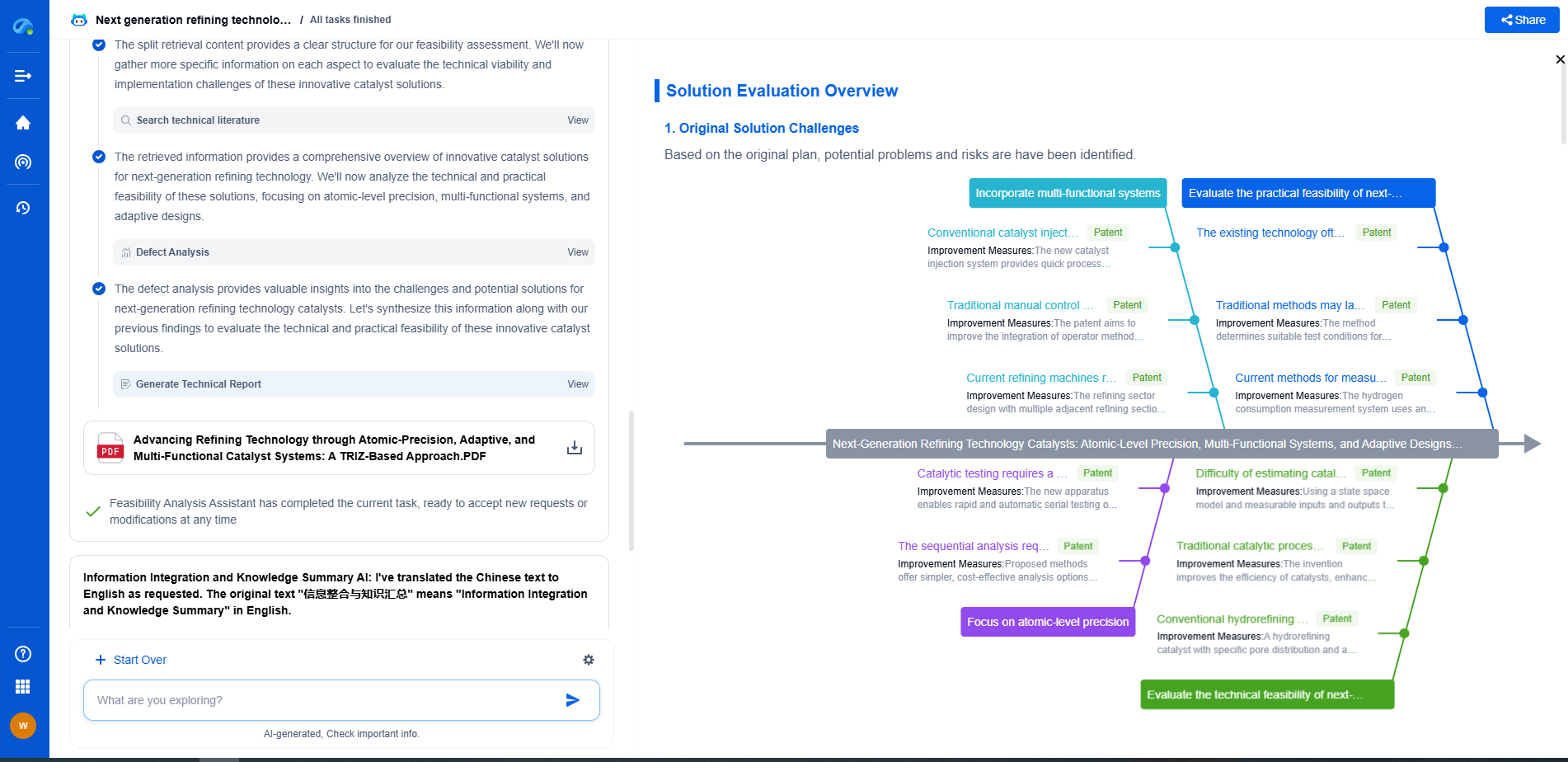How to Fix Arcing in ICP Plasma Torches: Matching Network Tuning and Grounding Checks
JUN 26, 2025 |
Arcing in Inductively Coupled Plasma (ICP) torches is a common issue that can disrupt analytical performance and compromise the integrity of results. Arcing typically occurs due to improper tuning of the matching network or inadequate grounding. This article will guide you through understanding the causes of arcing and provide strategies for effectively addressing these issues.
Understanding ICP Plasma Torch Arcing
ICP torches operate by generating a high-temperature plasma through radio frequency (RF) energy. When arcing occurs, it can lead to fluctuations in the plasma, resulting in unstable performance and inaccurate data. It is crucial to grasp the underlying causes of arcing to implement effective solutions.
Common Causes of Arcing
1. **Poor Matching Network Tuning**: The matching network is responsible for ensuring that the maximum amount of RF power is transferred to the plasma. If the network is not tuned correctly, it can lead to impedance mismatches, causing arcing.
2. **Inadequate Grounding**: A well-grounded system is essential for the stability of ICP torches. Insufficient grounding can lead to potential differences that encourage arcing.
3. **Worn or Damaged Components**: Wear and damage to components like the torch, coil, or connectors can increase the likelihood of arcing.
4. **Improper Installation**: Incorrect installation of the torch or related components can disrupt the RF field, leading to arcing.
Matching Network Tuning
A properly tuned matching network is essential for minimizing arcing. Here are steps to ensure proper tuning:
1. **Regular Calibration**: Periodically check and calibrate your matching network to ensure it is operating within the manufacturer’s specifications. This can help identify discrepancies that might lead to arcing.
2. **Monitor Impedance**: Use an impedance analyzer to monitor the impedance of the system. Any significant deviation from the expected impedance could indicate a tuning issue.
3. **Adjusting Capacitors and Inductors**: Fine-tune the capacitors and inductors within the matching network to achieve the lowest reflected power. This ensures optimal power transfer and minimizes the potential for arcing.
4. **Routine Maintenance**: Regularly inspect and maintain the matching network components to ensure they are free from wear and operating correctly.
Grounding Checks
Effective grounding eliminates potential differences and reduces the risk of arcing. Here are some grounding practices:
1. **Inspect Ground Connections**: Regularly check all ground connections to ensure they are secure and free from corrosion or damage.
2. **Use Proper Grounding Techniques**: Employ proper grounding techniques such as using a single-point ground system to prevent ground loops, which can cause arcing.
3. **Check Ground Resistance**: Measure the ground resistance periodically. A low resistance reading indicates effective grounding, while a high reading might require corrective action.
4. **Upgrade Grounding System**: If persistent issues with arcing occur, consider upgrading the grounding system to handle higher loads or to improve performance.
Addressing Component Issues
In addition to tuning and grounding, inspect and maintain all related components:
1. **Regular Inspection**: Frequently inspect the torch, RF coil, and connectors for any signs of wear or damage.
2. **Replace Damaged Parts**: Promptly replace any damaged or excessively worn components to maintain optimal performance and reduce the risk of arcing.
3. **Ensure Proper Installation**: Re-evaluate the installation process to confirm that all components are correctly aligned and securely installed.
Conclusion
Addressing the problem of arcing in ICP plasma torches requires a comprehensive approach that includes proper matching network tuning and effective grounding. By regularly inspecting and maintaining your equipment, you can significantly reduce the occurrence of arcing and ensure the reliability and accuracy of your ICP analyses. Taking these proactive measures will help you maintain the integrity of your analytical processes and achieve consistent, high-quality results.
Empower Electromagnetic Innovation with Patsnap Eureka
From high-frequency antenna arrays and electromagnetic shielding to plasma propulsion and wave-based energy transfer, the electromagnetic domain sits at the core of next-generation technologies. Yet navigating its vast landscape of patents, research papers, and evolving technical standards can be time-consuming and complex.
Patsnap Eureka, our intelligent AI assistant built for R&D professionals in high-tech sectors, empowers you with real-time expert-level analysis, technology roadmap exploration, and strategic mapping of core patents—all within a seamless, user-friendly interface.
👉 Experience Patsnap Eureka today and transform how your team navigates the complexity of electromagnetic innovation.
- R&D
- Intellectual Property
- Life Sciences
- Materials
- Tech Scout
- Unparalleled Data Quality
- Higher Quality Content
- 60% Fewer Hallucinations
Browse by: Latest US Patents, China's latest patents, Technical Efficacy Thesaurus, Application Domain, Technology Topic, Popular Technical Reports.
© 2025 PatSnap. All rights reserved.Legal|Privacy policy|Modern Slavery Act Transparency Statement|Sitemap|About US| Contact US: help@patsnap.com

